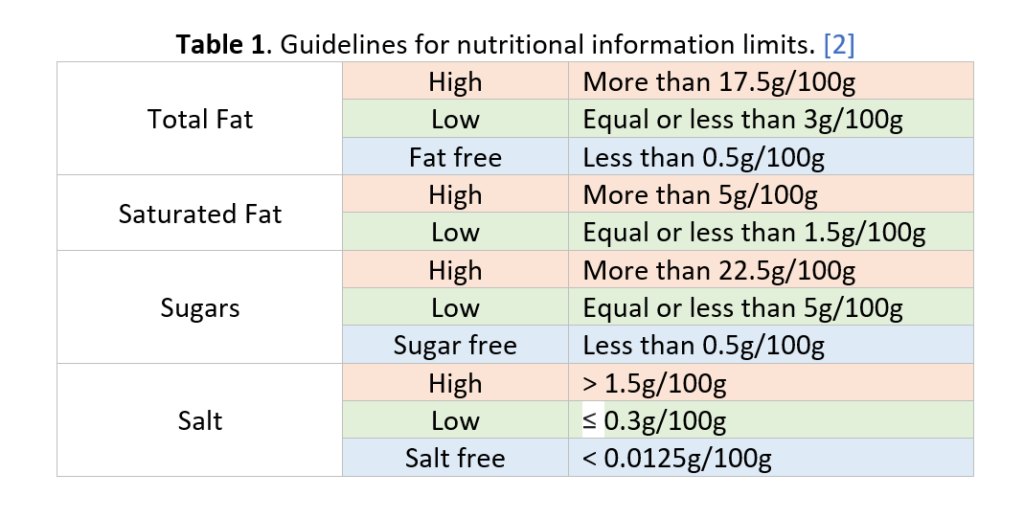Nutrition Facts: The Science Behind the Label
Nutrition Facts: The Science Behind the Label
All about nutritional values and how they are produced.
February 12, 2021

By Francisca Navarro Fuentes
Have you ever read the nutrition facts on your Friday nights double pepperoni frozen pizza? Did you ever wonder what those values mean, or think about how they are produced? Feed your curiosity with this post and find out about the science behind the label!
Nutrition facts are a powerful tool to help you understand the composition of a product, so that the consumer of the product is informed. Nowadays, the variety of products to choose from is endless, but knowing what is in your food can help you to pick what to buy.
By law, it is mandatory that nutrition facts are included in labels. This is controlled by Regulation (EU) No 1169/2011 [1] on the provision of food information to consumers. Therefore, nutrition declaration must include energy (KJ/Kcal), total fat and saturated fat (g), carbohydrates and sugars (g), proteins (g) and salt (g). Besides, it is optional to include values such as mono-unsaturates and polyunsaturates, polyols, starch, fibers and vitamins or minerals. The values are reported per 100g or 100mL of product, and often per portion too.
But do all products have to have a nutrition label? It may surprise you to learn that the answer is: no. There are products exempt from this rule, such as waters, spices, salt, sweeteners, tea, food additives, gelatine, yeast and chewing gums, among others.
Most people don’t pay attention to the nutritional information and one of the reasons could be a lack of knowledge on how to interpret them. In order to help the consumer, the NHS has published a list of guidelines, summarized in Table 1.

So how are nutritional values produced?
Nutritional values are produced in analytical chemistry laboratories. A representative portion of the product arrives to the laboratory, this is then blended and homogenized into a paste (like your morning vegetable smoothy, ew!). This paste is stored in an airtight bag, ready for analysis.
Chromatography, flame photometry, spectrophotometry, high temperatures (up to 600 ºC!) and high pressures are techniques and conditions used to determine nutritional values. As you would imagine, in order to provide this information, trained chemistry analysts are required. I know, these techniques sound scary but, believe me, chemists love them! Although these machines are subject to break downs, chemists like me thrive on a broken machine’s challenge.
Now, how can you (or I), as a consumer, trust the values in the nutrition facts table? For that, a governmental body, known as United Kingdom Accreditation Service (UKAS), assesses and accredits analytical chemistry laboratories ensuring that the values obtained in laboratory A would be the same as the ones in laboratory B across the UK.
In conclusion, labels are educational as it helps to understand calories and nutrients. They regulated by Regulation (EU) No 1169/2011 and the values are generated in UKAS accredited analytical chemistry laboratories, ensuring the customer rights and accuracy of the data.
References
[1] EUR-Lex Website: https://eur-lex.europa.eu/legal-content/EN/TXT/?uri=CELEX:02011R1169-20180101 Last visited 6/2/21
[2] NHS Website: https://www.nhs.uk/live-well/eat-well/how-to-read-food-labels/#:~:text=Nutrition%20labels%20are%20often%20displayed,certain%20nutrients%2C%20such%20as%20fibre. Last visited 6/2/21
